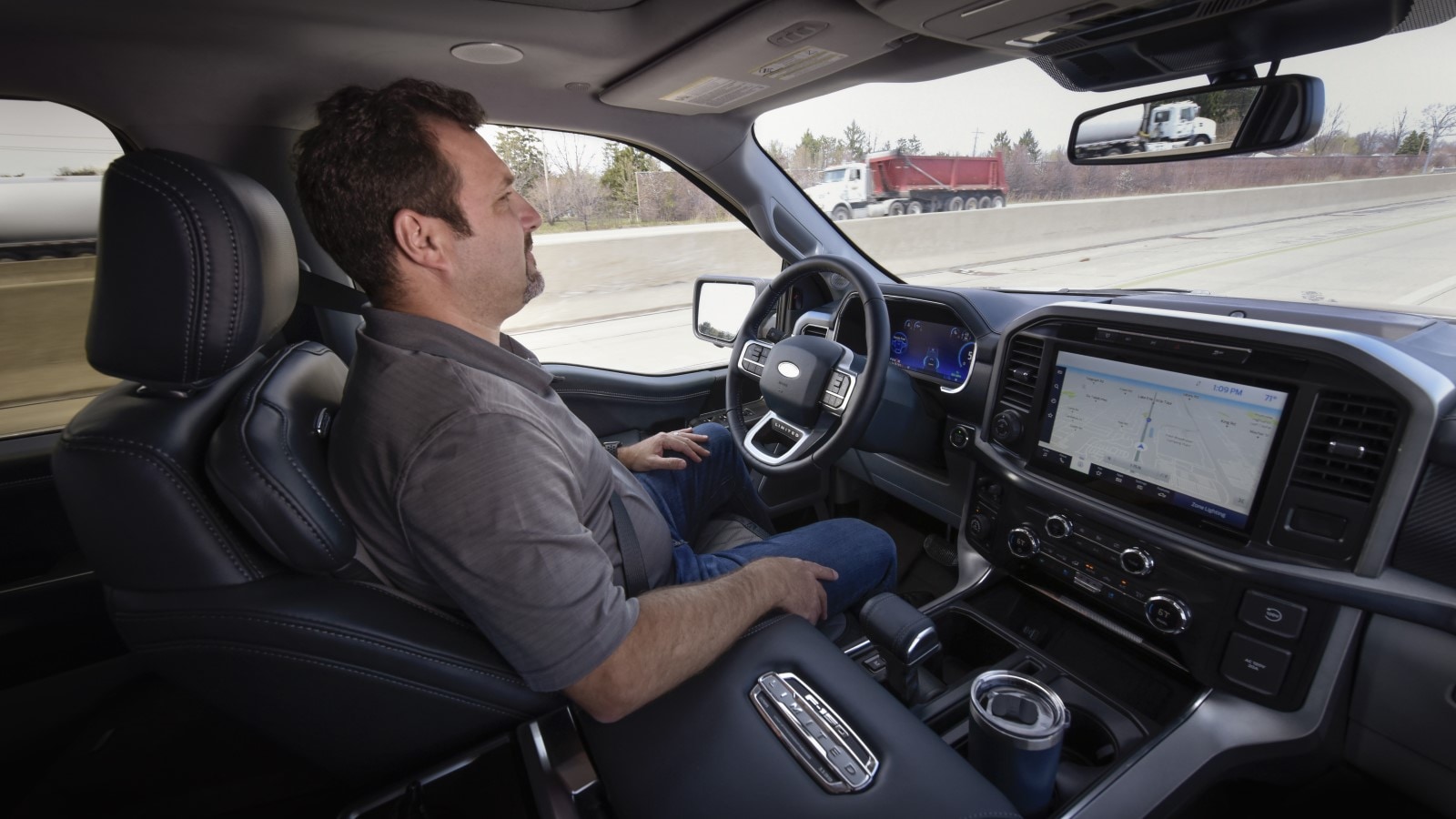Automakers are not as close to self-driving cars as their hype would have you believe. Still, many offer advanced driver assistance systems that can take over some of the driving duties under limited conditions. According to Consumer Reports, Ford’s BlueCruise system is the best.
Tesla — the brand many Americans most associate with the idea of self-driving cars — makes just the eighth best system of 17 in CR’s tests.
Related – Self-Driving Cars: Everything You Need to Know
What the Systems Can and Can’t Do
There are no true self-driving cars for sale today. The names automakers give to advanced driver assistance systems can make them seem like they drive themselves. But most are far more limited than their names might imply.
Most combine a smart cruise control that can accelerate and brake to keep your car a safe distance from traffic ahead with a lane-centering system that can turn to keep it centered in its lane.
Automakers use a framework of five levels to describe their efforts to build self-driving cars someday. Level 5 would be true self-driving.
With one exception, the most advanced systems for sale today are Level 2 systems — they allow drivers to take their hands off the wheel briefly but must keep their eyes on the road. They work only under limited circumstances.
Mercedes-Benz sells a Level 3 system — one that allows drivers to take their eyes off the road under limited conditions — in California and Nevada. But that system, known as Drive Pilot, is so new that most drivers have never encountered it. CR did not include Drive Pilot in its tests, using Mercedes’ more common Driver Assistance system instead.
The Tests
CR drivers tested the cars on the magazine’s test track and a 50-mile loop of public roads, rating each on 40 performance measures “such as steering the car, controlling the speed, and keeping the driver safe and engaged with the act of driving.”
Some of the systems can change lanes and react to traffic lights, but those functions were not tested.
Several automakers appear more than once in the rankings because they offer more than one system for sale in 2023, each found on different models.
The Scores
| Rank | Manufacturer | System Name | Score (out of 100) |
| 1 | Ford/Lincoln | BlueCruise | 84 |
| 2 | Chevrolet/GMC/Cadillac | Super Cruise | 75 |
| 3 | Mercedes-Benz | Driver Assistance | 72 |
| 4 | BMW | Driving Assistance Professional | 69 |
| 5 | Toyota/Lexus | Safety Sense 3.0/Safety System+ 3.0 | 65 |
| 6 | Nissan/Infiniti | ProPILOT Assist 2.0 | 63 |
| 7 | Volkswagen/Audi | Travel Assist/Adaptive Cruise Assist | 62 |
| 8 | Tesla | Autopilot | 61 |
| 9 | Hyundai/Kia/Genesis | Highway Assist 2 | 59 |
| 9(tie) | Lucid | Highway Assist | 59 |
| 9 (tie) | Rivian | Highway Assist | 59 |
| 9 (tie) | Subaru | Advanced Adaptive Cruise Control w/Lane Centering Assist | 59 |
| 10 | Nissan/Infiniti | ProPILOT Assist | 58 |
| 10 (tie) | Honda/Acura | Honda Sensing/AcuraWatch | 58 |
| 11 | Jaguar/Land Rover | Adaptive Cruise w/Steer Assist | 53 |
| 11 (tie) | Volvo/Polestar | Pilot Assist | 53 |
| 12 | Hyundai/Kia/Genesis | Highway Driving Assist | 47 |
Driver Assistance is Controversial
Though automakers advertise the systems heavily, studies show Americans have little faith in self-driving cars. One prominent study found trust in the systems sinking, not improving, as they grow more common.
Safety advocates warn that marketing for the systems is often misleading. A J.D. Power survey recently found that almost a quarter of Americans believe Teslas can drive themselves — something no car can do.
Other studies have found that the systems that monitor driver attention are unreliable and easily fooled and that drivers rely on them too much. Many say they admit to performing tasks — like eating and checking emails — behind the wheel even though those systems aren’t supposed to allow that.








